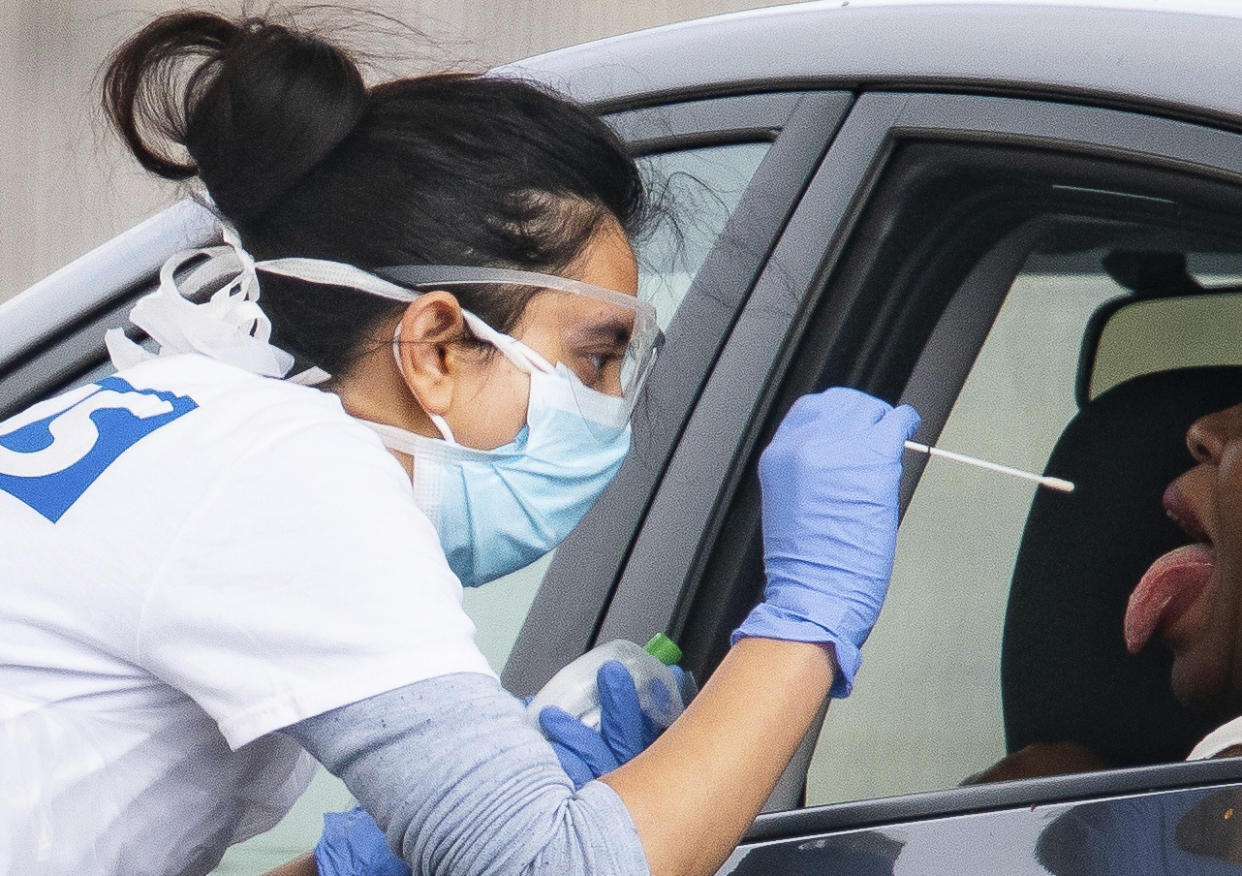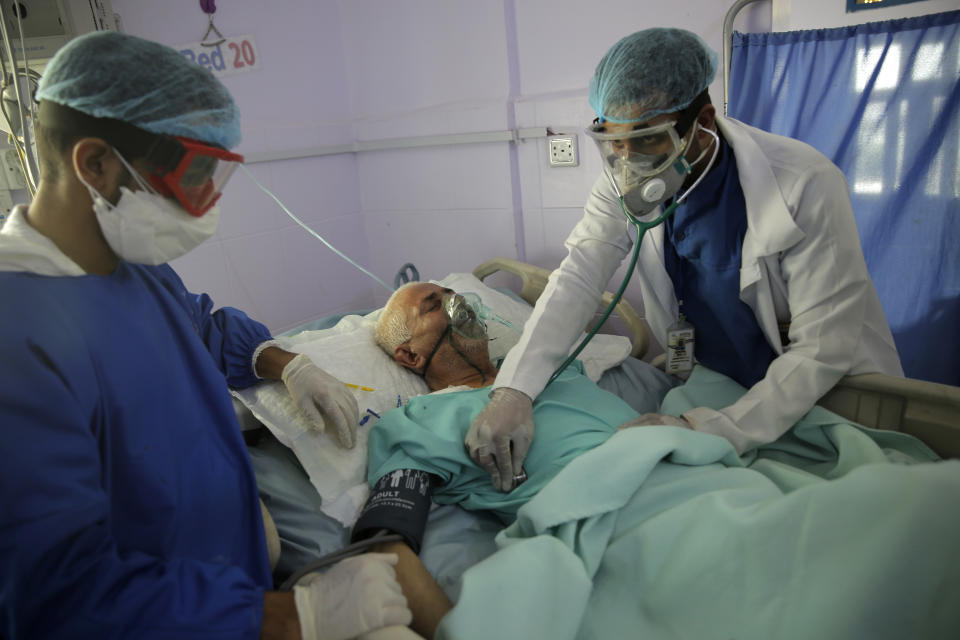Decline in coronavirus numbers is slowing, ONS data suggests

The rate at which the number of coronavirus infections in England is declining has “slowed over recent weeks”, a new report has suggested.
Published by the Office for National Statistics on Thursday, the document showed the results of data from the recent COVID-19 Infection Survey.
Data shows the average number of new coronavirus cases per day since the end of April has fallen from 4,500 last week to 3,800.
The figure was based on the results of swab tests collected from 24,413 participants, of which 10 individuals tested positive for COVID-19.
The ONS said the decline suggested by this model “appears to have slowed in recent weeks”, with the proportion of the population testing positive dropping from an estimated 0.33% on 26 April to 0.10% by 26 May, before levelling off at around 0.07% in the days up to 13 June.
Results for the most recent period are provisional, as not all swab test results have been received, and this may result in further revisions to the figures.
It comes as the Department of Health and Social Care (DHSC) said 42,288 people had died in hospitals, care homes and the wider community after testing positive for coronavirus in the UK as of 5pm on Wednesday, up by 135 from 42,153 the day before.
Separate modelling published by the ONS and carried out by the universities of Oxford and Manchester showed “a clear downward trend” in the estimated percentage of people in England testing positive for Covid-19 since the infection study began on 26 April.
This compares with an average of 4,500 new infections per day for the period 26 April to 7 June, which was estimated by the ONS last week.
The ONS also said that at any given time between 31 May and 13 June, an average of 33,000 people in private households in England had COVID-19.
This was the equivalent of 0.06% of the population or about one in 1,700 individuals.

The ONS said this was a “clear decrease” from the average of 149,000 people infected between 3 and 16 May, which was the equivalent of 0.27% of the population.
The report read: "Our latest estimates indicate that at any given time during the two weeks from 31 May to 13 June, an average of 33,000 people in England had the coronavirus.
"This equates to 0.06 per cent of the population in England or around one in 1,700 individuals.
“This estimate is based on swab tests collected from 24,413 participants, of which 10 individuals tested positive for COVID-19."
Coronavirus: what happened today
Click here to sign up to the latest news, advice and information with our daily Catch-up newsletter
Read more about COVID-19
How to get a coronavirus test if you have symptoms
How easing of lockdown rules affects you
In pictures: How UK school classrooms could look in new normal
How public transport could look after lockdown
How our public spaces will change in the future
Help and advice
Read the full list of official FAQs here
10 tips from the NHS to help deal with anxiety


